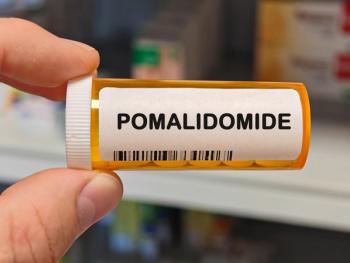
Pharmacodynamics of BTK Inhibitors in CLL Treatment
Katie Tobon, PharmD, BCOP, leads the discussion comparing dosing and drug interactions among the FDA-approved BTK inhibitors ibrutinib and acalabrutinib for the treatment of CLL.
Episodes in this series

Javier Pinilla-Ibarz, MD, PhD: Let’s discuss the pharmacodynamics and dosing of different BTK inhibitors because we’re discussing dosing ibrutinib and acalabrutinib. We’ll discuss how we’re going to overcome or manage this in our practice.
Katie Tobon, PharmD, BCOP: First let’s talk about ibrutinib. The dosages of ibrutinib and CLL [chronic lymphocytic leukemia] is 420 mg once daily. It’s important to know the different indications for ibrutinib have different dosing. For CLL, it’s 420 mg. I counsel patients that the tablet should be taken whole and with a glass of water; they shouldn’t crush them. It doesn’t matter with regard to meals. I ask patients to be consistent and never to double up on a dose. If they normally take it in the morning and they realize in the afternoon that they’ve forgotten it, it’s fine to take it, but never double up the dose in 1 day.
With acalabrutinib, the dosage is 100 mg twice daily. Ideally, you want to be 12 hours, but if it’s not exact, that’s OK. This can be taken with or without food, but consistency is important. There are many drug interactions with ibrutinib and acalabrutinib, so both of these are substrates of CYP3A4. That means there are a million drug interactions. There are many inhibitors and inducers at 3A4 that will affect these medications, so it’s important to have a thorough look at the patient’s medication list. We’re seeing down the line some more infections with the BTK [Bruton tyrosine kinase] inhibitors and rarely fungal infections where patients would be put on an azole. This is a clinically significant interaction that we would have to make some adjustments for.
Your vitamin K antagonist should also be avoided because of the risk of bleeding. Caution should be used with NSAIDs [nonsteroidal anti-inflammatory drugs], fish oil, vitamin E, aspirin, and anything else that includes or that increases the risk of bleeding. That also goes for direct oral anticoagulants. It’s not contraindicated with the BTK inhibitors, but it’s something to consider, and it’s very patient specific.
Acid suppression is not an issue with ibrutinib, but it definitely is with acalabrutinib. Acalabrutinib is twice a day. PPIs [proton pump inhibitors] should be avoided altogether. If a patient truly has severe GERD [gastroesophageal reflux disease] or heartburn, you could do an antacid like Tums, but you have to separate it by 2 hours on either side. You can do that with an H2-receptor agonist as well, but it gets tricky and it’s difficult. Typically, if patients have true GERD or heartburn, acalabrutinib may not be your best option.
There was a new formulation of BTK inhibitor that will be approved soon; it was presented at ASH [American Society of Hematology Annual Meeting]. Are you familiar with this agent? Do you know what may come about with this?
Javier Pinilla-Ibarz, MD, PhD: It was presented at ASH. It seems obvious that to overcome these issues with PPIs, acalabrutinib has already produced a new composition that can be given through a nasogastric tube if the patient cannot swallow. It’s not going to have the same issues. You were discussing the pharmacokinetics of these 2 drugs. Both drugs can achieve 90% to 95% of inhibition of the target. Studies have been unclear. One issue they’ve seen is how BTK drugs in general can penetrate tissues. Obviously, we’re talking about lymph nodes, where these drugs have nice activity. They’re trying to detach the lymph nodes from these niches. They release to the peripheral blood in the redistribution of lymphocytosis. That’s a fundamental aspect of the efficacy of this medication.
It’s important to discuss the dosing. You mentioned the dose for ibrutinib. At least you can dose reduce multiple times. We now have initial control of the disease, and the adverse effects can be lowered with similar efficacy. This has happened with ibrutinib. With acalabrutinib, you can go from twice a day to once a day; with ibrutinib, you can reduce to 2 pills or even 1 pill. There’s a formulation for 280 mg and 140 mg.
As you mentioned, it’s very important to have a detailed history about how many drugs patients are taking. We always discuss antibiotics like Cipro…that we use in certain infections, as well as the cardiotoxic arrhythmias or drugs that control A-Fib [atrial fibrillation], like Cardizem or verapamil. Those are things we take into consideration.
Transcript Edited for Clarity
Newsletter
Stay informed on drug updates, treatment guidelines, and pharmacy practice trends—subscribe to Pharmacy Times for weekly clinical insights.
















































































































































































































